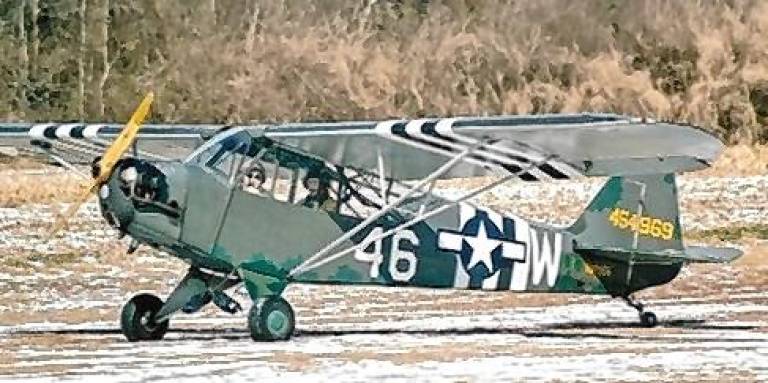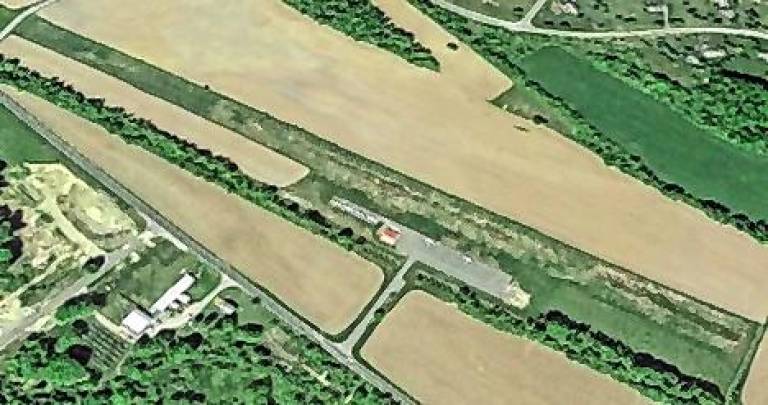

Today I am pleased to have a guest columnist, Rich Vohden, who is an expert historian on Green Township and the southern part of our county and is one of the leading historians of Sussex County.
In December 1903, the brothers Wilbur and Orville Wright spent the day trying to get their flying machine off the ground.
By the end of the day, their fourth flight flew an impressive distance of 852 feet.
One year and two months after this historic flight, John B. Trinca was born.
These two events would come together in just a few years.
In 1925, Trinca moved with his family from Clifton to their 265-acre dairy farm located in Green Township on the main road between Newton and Hackettstown.
The farm had land on both sides of the Tranquility-Huntsville Road (now Airport Road).
The Lehigh-Hudson River Railroad tracks ran through the farm almost parallel with the road, and off in the distance, the Delaware, Lackawanna and Western Railroad could be seen high on the cut-off.
Dairy farming was the main livelihood in this area. Just up the road toward Newton was the 300-acre Katzenstein Farm (now the Mooney Farm) and right around the corner on Pequest Road (now Creek Road) was the large Pittinger Farm.
Most of the land in Green Township was devoted to dairy farming. There were a few creameries, gristmills, blacksmith shops and stores - all catering to the dairy farmers.
This was the period when Sussex County, famously, had more cows than people.
World War I had ended a few years before and the economy was booming.
This was the Roaring ’20s: a decade of change. This included the birth of the aviation industry.
Then in 1929 came the crash, the Great Depression, that impacted everyone.
It was 1939 before the economy showed signs of recovery.
According to a Newark Evening News article, John Trinca said, “I wanted to fly ever since I was a kid and saw a plane at the Roosevelt Field.”
When he finally earned enough money from his farm, he bought a small two-seater and learned to fly.
It was reported in the late 1930s that Trinca, a resident of the township, with the help of a few friends, built a private landing strip on his farm.
In time, it was moved across the road from its original location to its present site.
A Feb. 23, 1939, New Jersey Herald newspaper article reported that “the new airport and flying field on the John Trinca farm near Andover is gradually moving towards completion.
“Last Saturday, Mr. Trinca awarded a contract to a builder, to erect a large, five-plane air hangar with all the modern facilities and conveniences for those traveling the nation’s airways, and who will no doubt be making use of the Trinca airport when visiting Sussex County.”
In the article, it also was reported that “a force of men are now busy removing about fifty large sugar-maple trees along the county highway and adjacent to the airport. George Campbell, of Bartley, is moving his large sawmill to the Trinca farm this week to convert into lumber the large trees and timber that will come from the clearing of a wood entrance of the airport.”
On May 11, 1939, it was reported that “the Trinca Airport in the southern portion of Sussex County was duly registered last Thursday as a state-licensed field for commercial and transit flying and also to engage in the sale of airplane gasoline and oils and other aeronautical accessories.”
The airport opened on June 1, 1939. World War II started three months later, on Sept. 1, 1939.
During the war, all airports within 100 miles of the eastern seaboard were closed to civilian traffic; Trinca was included.
However, in the closing days of the war, when restrictions were lifted, the airport became very active as it was just beyond the new line of government restrictions for operating airports along the coast.
After the war, this small grassroots airport served two purposes: training in the maintenance of small aircraft and providing private flight instruction to a great number of adventurous souls who had the same dreams as John Trinca.
My favorite personal memory of the airport is from the day my brother-in-law, Jim Chirip, after many lessons, flew his required solo flight.
There I stood next to the runway watching him take off all by himself and disappearing over the horizon. I was wondering if I would ever see him again.
After what seemed like a very, very long time, the plane came back into sight.
As it landed, I could see him behind the controls.
My first thought was, how the hell can he see where he’s going? His smile was so big his eyes were closed.
It was an exciting event.
He landed on the mowed runway that was about 2,700 feet long, the same length it had been since the 1940s, and it was maintained until just recently.
There was a proposal for a Home Depot warehouse alongside the railroad on the property during the 1980s. It never happened.
About 1995, the new property owners sued the town and won the right to build as many as 240 houses on the roughly 111 acres which comprise the airport property. This never happened.
The airport remained in private ownership until December 2002, when the township purchased the land from Tranquility Aero Corp. to preserve the airport.
The airport continued to operate until 2020, when it was officially closed. The future is uncertain.
There are many great historic articles online showing fantastic photos of the airport.
If you check out the photos and take a ride down Airport Road, you will notice that the airport looks much the same today as it did when it first opened.
I personally hope it stays that way.
Bill Truran, Sussex County’s historian, may be contacted at billt1425@gmail.com